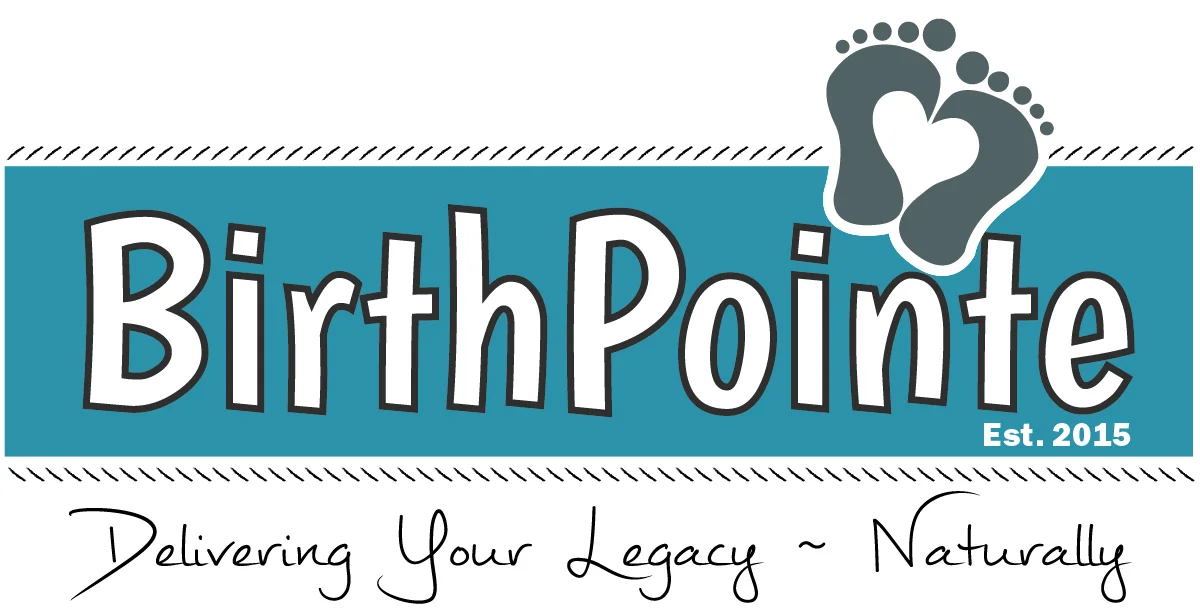Breastfeeding may be natural, but that doesn’t mean it always comes naturally. Many new parents find themselves struggling with questions like: Is my baby latched correctly? Why is she feeding so often at night? What do hunger cues look like before crying starts? These uncertainties can leave new mothers feeling stressed, discouraged, or even in pain. That’s where breastfeeding classes come in.

For Fort Worth expectant parents, breastfeeding education is more than just a nice-to-have — it’s a powerful tool that helps families avoid common challenges such as latch issues, confusion over infant cues, or frustration during growth spurts. In a supportive class environment, you’ll gain hands-on practice, evidence-based guidance, and the confidence to troubleshoot problems before they escalate.
In this article, we’ll explore why taking a breastfeeding class before birth is so valuable, dive into the fundamentals of achieving a good latch, explain how to read your baby’s cues, normalize growth spurts and cluster feeding, and highlight strategies for overcoming common obstacles. Finally, we’ll show you what makes breastfeeding classes at BirthPointe unique — and how they can set you up for a calmer, more connected feeding journey.
Why Take Breastfeeding Classes Before Birth?
Confidence Through Preparation
Research consistently shows that prenatal breastfeeding classes lead to higher breastfeeding success rates. According to the American Academy of Pediatrics, mothers who receive early education are more likely to initiate breastfeeding and continue past the six-month mark — a milestone linked to significant health benefits for both mom and baby.
One of the biggest advantages of attending a class during pregnancy is confidence. Many new parents underestimate how overwhelming those first postpartum weeks can be. Between sleep deprivation, postpartum recovery, and adjusting to life with a newborn, learning something as nuanced as how to tell if your baby is latched correctly can feel like too much. By practicing ahead of time, you and your partner arrive at those first feedings prepared, not panicked.
Local Care with a Natural Birth Focus
At BirthPointe, breastfeeding classes are woven into a holistic care model. Expectant parents who enroll in prenatal visits and classes get hands-on experience with positioning, latch techniques, and recognizing feeding cues. This proactive approach ensures smoother transitions once your baby arrives.
Unique insight: Unlike hospital-based classes that often focus on rigid feeding schedules, community classes emphasize responsive feeding. Parents are encouraged to trust their instincts and their baby’s signals, fostering a calmer, more connected start.
Mastering the Latch: Foundation of Successful Breastfeeding
Signs of a Good Latch
A proper latch is the foundation of successful breastfeeding. Signs include:
- Baby’s mouth is wide open, with flanged lips turned outward
- Chin presses into the breast, while the nose remains free
- Jaw movement is rhythmic, and you can hear or see swallowing
- Feedings are pain-free after the initial few seconds
Both the AAP and WIC Breastfeeding Support stress that a good latch prevents nipple damage and ensures effective milk transfer.
Common Latch Issues and How to Fix Them
- Shallow latch: A baby who only grabs the nipple can cause pain and poor milk flow. Break suction gently and reposition for a deeper latch.
- Nipple trauma: Cracked or bleeding nipples often result from poor latch. Positions like football or side-lying can reduce pressure points.
- Baby fatigue: Some newborns tire quickly and slip off. A laid-back position may help gravity support the latch.
At BirthPointe, parents practice latching with models and receive real-time feedback. The prenatal class series ensures you leave confident in recognizing both good and bad latch.
Unique insight: Many families don’t realize that comfort, not perfection, is the goal. As the Cleveland Clinic explains, there is no single “perfect” latch; what matters is that it’s pain-free and milk is transferring.
Understanding Infant Cues: Feeding Before the Tears
Early vs. Late Cues
Babies give signals before crying:
- Early cues: Rooting, hand-to-mouth, sucking motions, alertness
- Late cues: Crying, frantic movements, changes in color
Responding to early signs leads to calmer, more effective feedings. Waiting until crying begins can make latching harder and increase stress for both mother and baby (WIC Breastfeeding Support).
Feeding on Cues vs. the Clock
Some parents worry about “spoiling” their baby by feeding on demand. But research from the AAP shows that feeding on demand supports milk supply and infant security.
At BirthPointe, parents practice recognizing subtle hunger cues. The emphasis is on responsive feeding, not rigid schedules.
Unique insight: Infant cues are often misunderstood by extended family who encourage clock-based feeding. Classes empower parents to advocate for responsive feeding even when outside voices suggest otherwise.
Navigating Growth Spurts and Cluster Feeding
What’s Normal and When to Expect Growth Spurts
Newborns often experience growth spurts at 2–3 weeks, 6 weeks, 3 months, and 6 months. Babies may nurse more frequently and seem unsatisfied. According to KellyMom, these phases typically last 2–3 days but can stretch up to a week.
Coping Strategies for Parents
Cluster feeding — multiple feedings in a short time, often in the evening — is normal and helps stimulate milk production. Strategies include:
- Staying hydrated and nourished
- Creating a feeding “nest” with snacks and water nearby
- Rotating positions to reduce strain
- Partner support with burping, soothing, and chores
At BirthPointe, classes normalize these patterns and provide take-home guides for managing expectations.
Unique insight: Growth spurts are often mistaken for “low milk supply.” In reality, they are nature’s way of boosting production.
Troubleshooting Common Breastfeeding Challenges
Everyday Hurdles
- Sore nipples: Often from shallow latch; manage with lanolin, air-drying, and improved attachment.
- Engorgement: Feed frequently, use warm compresses before and cold after, and hand express.
- Plugged ducts: Relieve with massage, frequent feeding, and position changes.
Serious Concerns and When to Call a Professional
- Mastitis: Symptoms include fever, chills, and painful red streaks. The Mayo Clinic advises that antibiotics may be needed in severe cases.
- Tongue-tie: Affects latch and milk transfer; IBCLC evaluation and possible frenotomy may be appropriate.
At BirthPointe, parents learn a “troubleshooting tree” to know when to manage at home and when to call a professional.
Unique insight: While online resources provide lists, classes walk you through decision-making with real-life scenarios.
Inside BirthPointe’s Breastfeeding Classes
What You’ll Learn
- Latch lab with hands-on practice
- Cue recognition drills
- Growth spurt game plans
- Troubleshooting strategies
Take-Home Tools
- Printable checklists
- Growth spurt timeline cards
- Referrals for IBCLCs and support groups
Classes at BirthPointe align with natural birth philosophies, offering small groups for personalized coaching and peer support.
Quick Takeaways
- Breastfeeding classes build confidence before birth and ease the postpartum transition
- Mastering the latch prevents pain and ensures good milk transfer
- Recognizing infant cues allows calmer feeds before crying starts
- Growth spurts and cluster feeding are normal and temporary
- Troubleshooting strategies help families manage challenges and spot red flags
- Local classes emphasize responsive feeding and ongoing support
FAQs About Breastfeeding and Classes in Fort Worth
1. When should I take a breastfeeding class?
Most parents benefit from taking a class during the third trimester, while there’s still time to practice positioning and ask questions before the baby arrives.
2. Can partners attend breastfeeding classes?
Yes. Partners are encouraged to join since they play a vital role in support, from helping with positioning to managing household tasks during cluster feeding phases.
3. What if I already plan to use formula or combination feeding?
Breastfeeding classes are still valuable. You’ll learn about responsive feeding, safe formula use, and how to protect milk supply if you want to partially breastfeed.
4. How do breastfeeding classes help with latch problems?
Classes provide hands-on practice with positioning and latch correction, plus guidance on when to seek extra help from an IBCLC (lactation consultant).
5. Are breastfeeding classes only for first-time parents?
No. Many second- or third-time parents attend to refresh skills or address challenges they faced with previous children.
6. What if breastfeeding hurts?
Mild discomfort at the start of feeds can be normal, but pain beyond the first seconds often signals a latch issue. Classes cover troubleshooting strategies and when to reach out for professional help.
7. Do classes cover pumping and returning to work?
Yes. Most courses, including those at BirthPointe, discuss pumping basics, milk storage, and strategies for maintaining supply when returning to work.
8. Can classes prevent problems like mastitis or low supply?
Education helps parents recognize early warning signs and apply prevention strategies. While not all problems can be avoided, informed parents often catch and address issues sooner.
Conclusion
The breastfeeding journey comes with joys and challenges. By addressing latch, cues, growth spurts, and troubleshooting in advance, you set yourself up for success. Prenatal education means you enter those first feedings with confidence instead of confusion.
At BirthPointe, breastfeeding classes go beyond textbooks, offering practice, resources, and supportive community care.
Ready to feel confident about breastfeeding? Register for a class in Fort Worth and start your journey with calm and clarity.

Traci is the greatest! She has delivered 2 of my babies and helped me through a miscarriage and at all times I have felt safe, loved, and cared for. She’s so knowledgeable, and she spends a lot of time talking with you and really getting to know you and how you’re doing. One of the things that impressed me the most was she makes the time and the effort to help you understand everything. She cares for you like you’re her family. Also her birth center is lovely, and her staff and apprentices are so friendly and good at what they do. No hesitation to recommend Birthpointe! -Catherine Morrel

